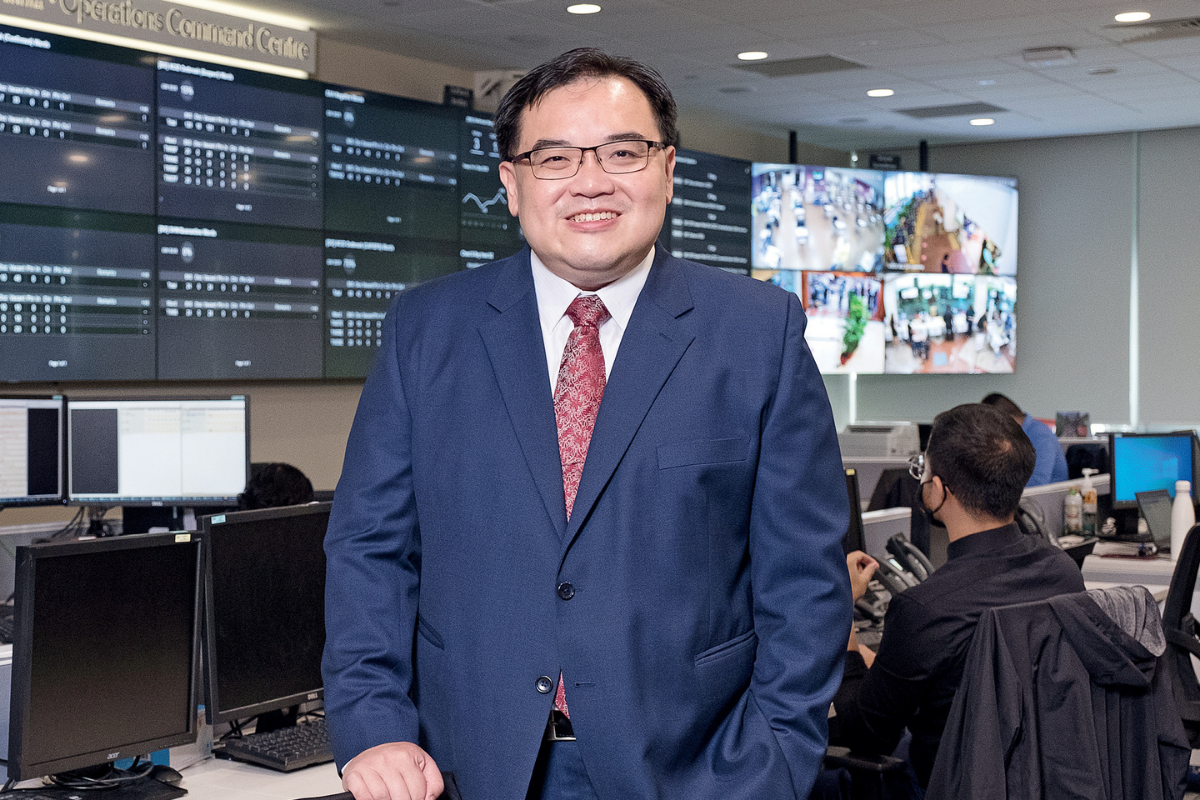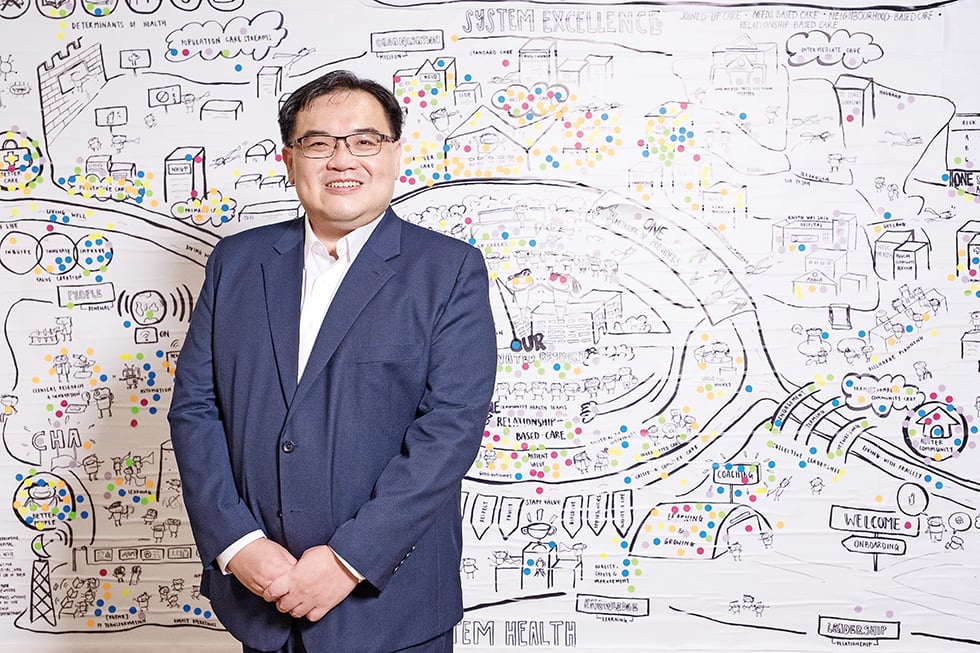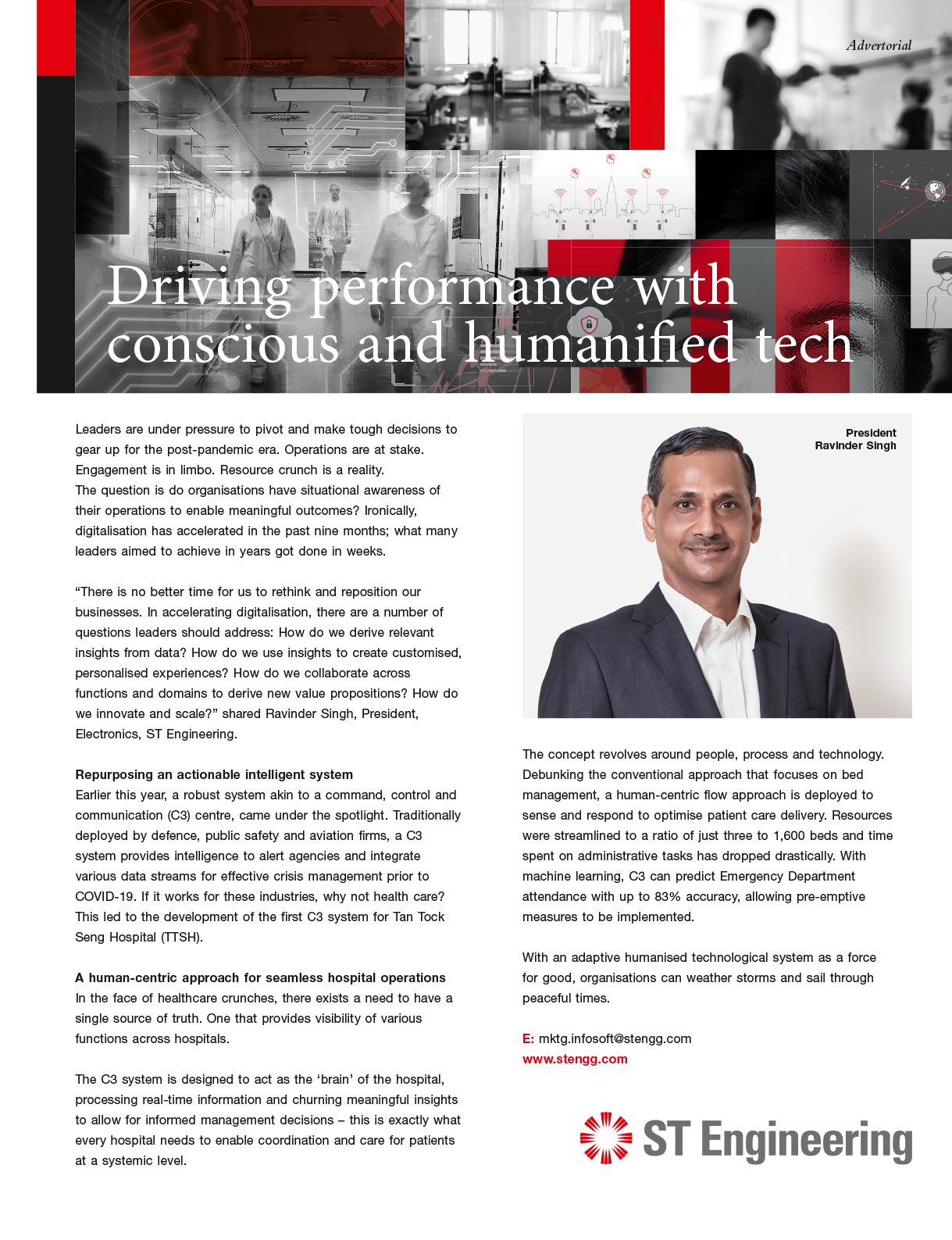Tan Tock Seng Hospital (TTSH) is redefining what a hospital should be in the future. Today, it is thick in COVID-19 action with the timely opening of its National Centre for Infectious Diseases (NCID) in September last year.

The hospital had experienced SARS in 2003 and H1N1 in 2009 – and lessons then were built into NCID by design and applied to the coronavirus pandemic. The hospital is able to safely continue caring for its regular patients while attending to the outbreak response.
TTSH CEO Eugene Soh lists another factor that guided the hospital through the crisis – relationships. “The glue that allows our organisation to undertake this fight at the epicentre of our response has been the relationships we’ve built,” he says.
“I’m grateful to have amazing staff who share passion and purpose. “Today, if you join TTSH, you know that one day you may be called upon to stand at the frontline of our nation’s response to a disease outbreak. That sense of duty has been with us at this hospital in our long history.”
A doctor by training with interests in management and public health, Eugene cites a quote by management consultant Peter Drucker: “The purpose of an organisation is to enable ordinary human beings to do extraordinary things.”
It’s something he fundamentally believes to be the case in health care, where a team comes together as one to care for patients, and it’s why he views relationships as the foundation of a hospital. “It’s definitely more than a job and it gives meaning to what I do,” he says.
“I see myself as a builder – someone who is building our health system, so that it’s relevant tomorrow, building relationships among our people, patients and partners, and building our renewal engine in the hospital such that we can continue to do our job well. That’s what I love about my role – the ability to build new things, to be able to build good relationships with colleagues and ultimately, to learn and grow with the health system.”
Looking ahead to the future of health care, Eugene hopes to see a shift to value-driven health care, rather than today’s volume-driven model. To deliver great health care, providers can maximise value for their patients over time and space.
In time, Eugene aims to see health care go beyond episodic visits to a care relationship. In terms of space, Eugene says care is now pretty much centred on facilities, but in the future he wants to see it centred on patients and integrated with the broader community. “Today, patients go where the care is; tomorrow, care can better follow the patient,” he says.

“My vision is that we will build a hospital without walls, where we can work with our people to build healthier and happier communities. This shift beyond patients to populations means that we can better serve our population before they even become our patients. The opportunity for us to change the conversation will be the greatest motivation in ensuring that health care is relevant and sustainable for the population we serve.”
It goes without saying that concepts like digitalisation and artificial intelligence will play a large part in this future. Digitalisation empowers care to be delivered anytime, anywhere, and AI can address its complexities to make care simple at the front end.
TTSH recently launched its Hospital Operations Command Centre featuring the state-of-the-art Command, Control and Communications (C3) system. The Hospital’s C3 system is developed by TTSH, Integrated Health Information Systems (IHIS) and ST Engineering Electronics (STEE).
STEE is a partner with expertise in developing command and control centres across a variety of industries. The idea is to shift from just resource management to enabling patient flow across the entire system to support care delivery and cut down on waiting times.
The next step for C3 is to go upstream to include pre-hospital care and downstream to transit care back into the community. Eugene is quick to stress that innovation isn’t about the technology itself, but how it can be used to address changing patient needs and workforce redesign.
“For me, innovation really starts with understanding what our patients and the wider population value. We redesign our care to drive that value; we add the relevant technologies to empower that care, and transform the workforce with better digitally-enabled jobs. The role of the hospital will remain to take care of those patients who require hospital care. But if we can go upstream, then we can prevent unnecessary admissions as well as hopefully provide for fewer years spent in disability and empower our patients towards better health. I think that must be the goal of any health system.”
Proudly supported by:



